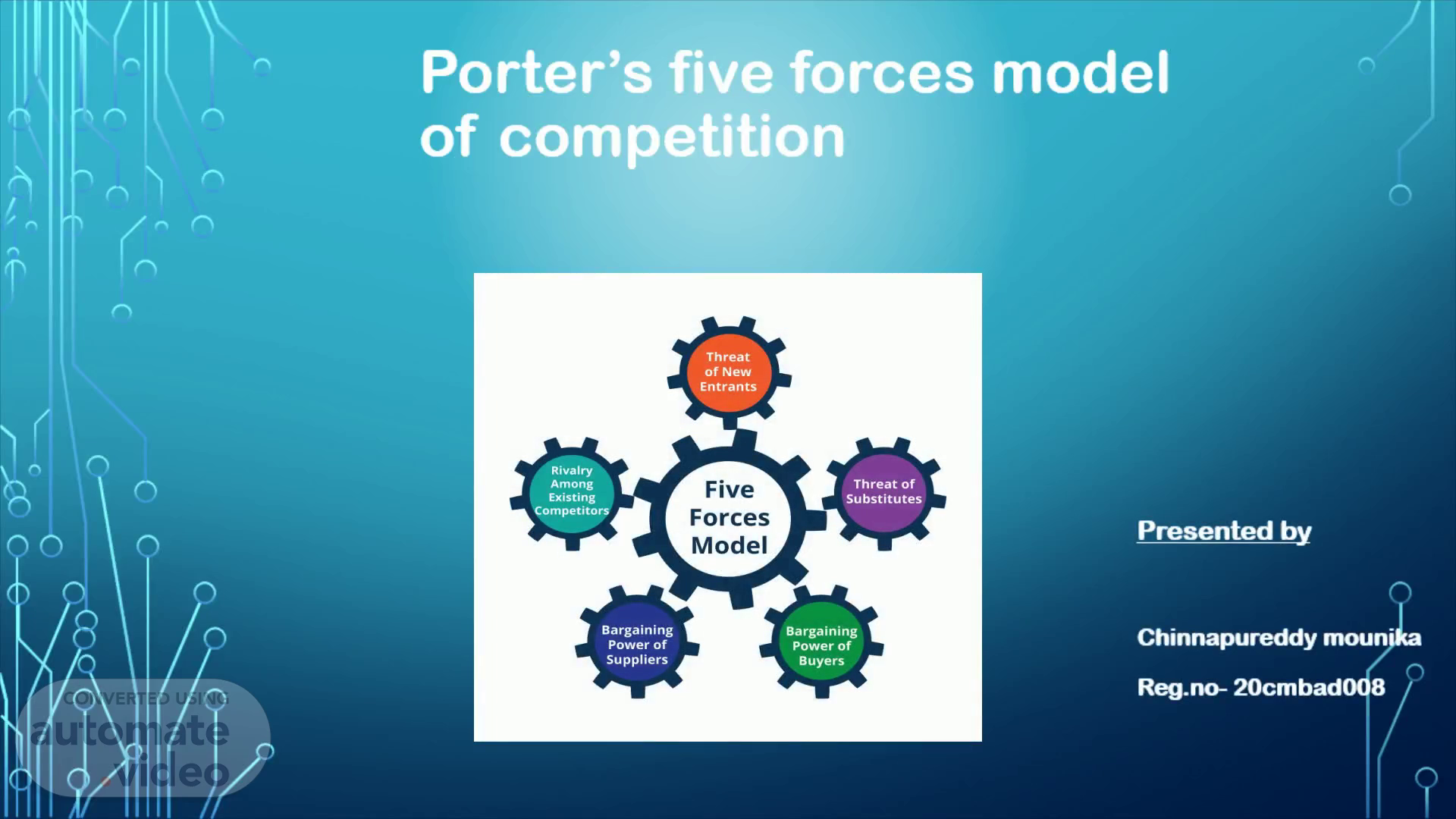
Porter's five forces model of competition
Scene 1 (0s)
Porter’s five forces model of competition. Presented by Chinnapureddy mounika Reg.no- 20cmbad008.
Scene 2 (9s)
Table of contents. Introduction Porter’s Five Forces Analysis Conclusion.
Scene 3 (17s)
Introduction. The model of the Five Competitive Forces was developed by Michael E. Porter. Since that time it has become an important tool for analyzing an organizations industry structure in strategic processes. Porter’s model is based on the insight that a business/corporate strategy should meet the opportunities and threats in the organizations external environment especially the competitive strategy should base on the understanding of industry structures and the way they change..
Scene 4 (38s)
Porter’s five forces analysis. Threat Of New Entrants Bargaining Power Of Buyers Bargaining Power Of Suppliers Threat Of Substitute Products Rivalry among existing competitors.
Scene 5 (48s)
Threat of new entrants. . Barriers to entry Economic of scale Brand loyalty Capital requirements Cumulative experience Switching costs.
Scene 6 (1m 0s)
Bargaining power of buyers. abstract. Size of each customer order Price sensitivity Buyers ability to substitute Buyers information availability Switching costs.
Scene 7 (1m 12s)
Bargaining power of suppliers. abstract. Number and size of suppliers Uniqueness of each suppliers product Focal companies ability to substitute.
Scene 8 (1m 23s)
Threat of substitute products. . Perceived level of product differentiation Switching costs.
Scene 9 (1m 33s)
Conclusion. High competition between large well established firms. Low switching costs and some alternatives mean customer has much power. Low supplier power (own development firms) Governments play an substantial role in industry contracts, regulation of crops, subsidies etc..
Scene 10 (1m 47s)
Thank you….